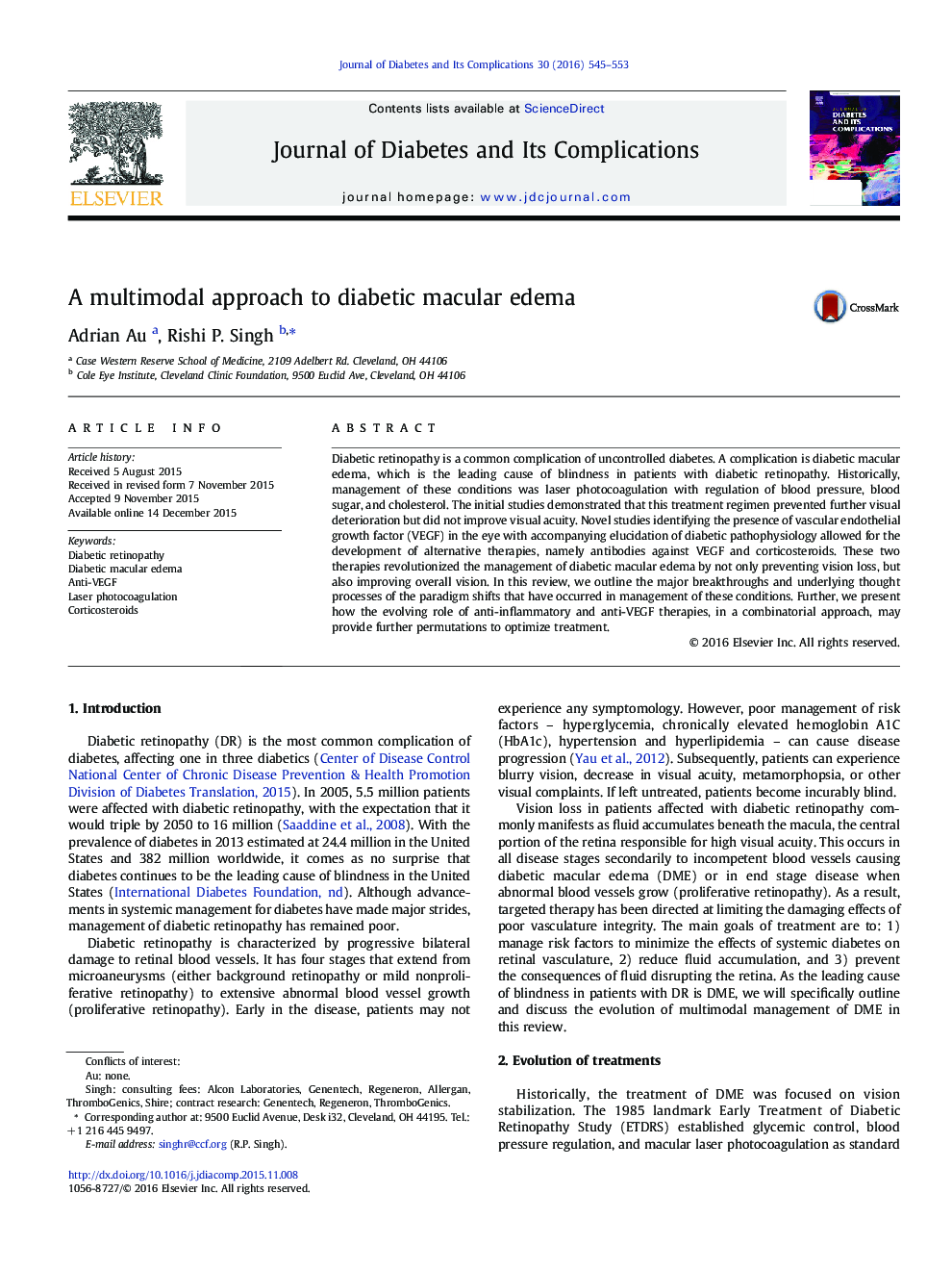| Article ID | Journal | Published Year | Pages | File Type |
|---|---|---|---|---|
| 5902117 | Journal of Diabetes and its Complications | 2016 | 9 Pages |
Diabetic retinopathy is a common complication of uncontrolled diabetes. A complication is diabetic macular edema, which is the leading cause of blindness in patients with diabetic retinopathy. Historically, management of these conditions was laser photocoagulation with regulation of blood pressure, blood sugar, and cholesterol. The initial studies demonstrated that this treatment regimen prevented further visual deterioration but did not improve visual acuity. Novel studies identifying the presence of vascular endothelial growth factor (VEGF) in the eye with accompanying elucidation of diabetic pathophysiology allowed for the development of alternative therapies, namely antibodies against VEGF and corticosteroids. These two therapies revolutionized the management of diabetic macular edema by not only preventing vision loss, but also improving overall vision. In this review, we outline the major breakthroughs and underlying thought processes of the paradigm shifts that have occurred in management of these conditions. Further, we present how the evolving role of anti-inflammatory and anti-VEGF therapies, in a combinatorial approach, may provide further permutations to optimize treatment.
